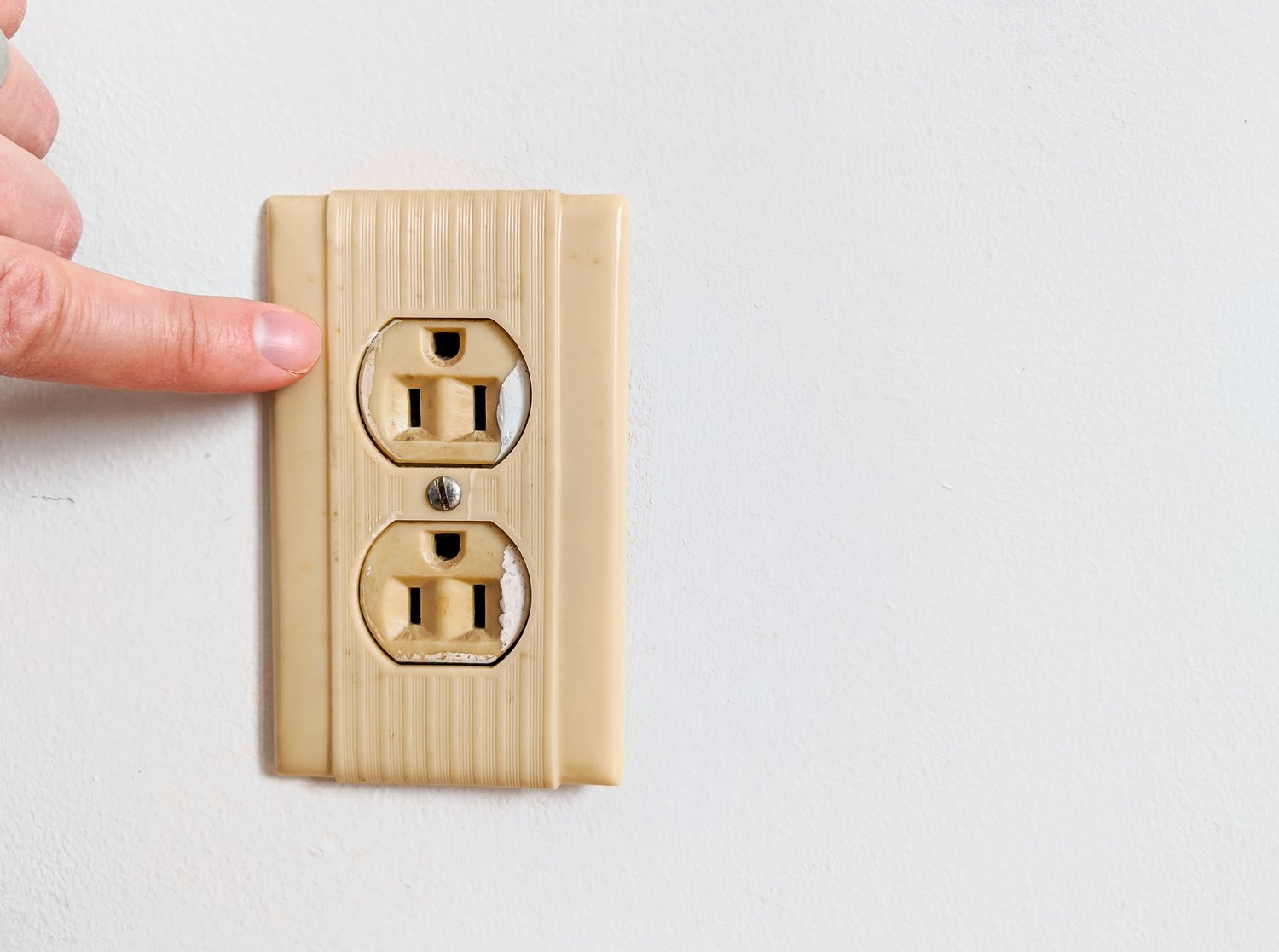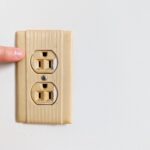Is your GFCI outlet causing you headaches with its sudden refusal to work? Understanding how to troubleshoot and reset these essential safety features can save you both time and stress. This article delves into why your GFCI outlet might not be working and provides effective solutions to bring it back to life, ensuring your electrical systems remain safe and functional.
- Discover how to identify the root causes of GFCI outlet malfunctions and the initial steps to diagnose the issue.
- Learn about common electrical problems like tripped breakers or loose wires that could impact your outlet’s performance.
- Follow safe and effective steps to reset your GFCI outlet and restore its proper function.
- Gain insight into advanced troubleshooting techniques for more persistent outlet issues, including using a multimeter.
By the end of this guide, you’ll be equipped with the knowledge to handle minor GFCI outlet problems. If issues persist, you’ll know when it’s time to seek professional help to prevent further electrical hazards.
Identifying Why Your GFCI Outlet Is Not Working: Troubleshooting and Reset Procedures
Understanding the causes behind your GFCI outlet malfunctioning is pivotal in maintaining electrical safety and ensuring a swift resolution.
GFCI outlets, also known as Ground Fault Circuit Interrupters, are designed to protect against electrical shock and potential fire hazards by cutting off the electrical flow when an imbalance is detected.
When your GFCI outlet stops working, it may be an indication of deeper electrical issues that need immediate attention to avoid further complications.
To effectively diagnose the problem, start with a thorough visual inspection.
Check for any visible signs of wear or damage on the outlet itself, such as discoloration, cracks, or a burning smell, which could indicate a need for immediate replacement.
Next, test the outlet’s functionality by pressing the ‘reset’ button – if it doesn’t click or stay in place, this might be a clue pointing to an internal problem.
It’s also beneficial to check connected appliances.
Unplug all devices to determine if one could be overloading or causing a fault in the system.
At this preliminary stage, identifying whether the issue lies with the outlet, the wiring, or external factors is essential.
This foundational knowledge will help in deciding if a simple fix is available or if deeper investigation is necessary.
Checking for Common Electrical Issues
Navigating through common electrical issues is a practical step in diagnosing why a GFCI outlet might not function correctly.
Common problems include:
Tripped Circuit Breakers: One of the most frequent culprits.
Check your electrical panel for tripped breakers.
A breaker that requires resetting could be the simple fix you need.
Loose Wires: Loose or disconnected wires within the outlet can disrupt the electrical circuit, leading to malfunction.
Ensure all connections are secure and intact.
This step requires caution, and it’s advisable to switch off the power from your main circuit breaker before inspecting.
Incorrect Installation: An improperly installed GFCI outlet will not operate correctly.
Review the installation manual or consult professional guidelines to ensure the outlet was installed properly.
If in doubt, consider having a professional review the setup.
By understanding these common electrical issues, you can make informed decisions about repairs and improvements needed for your GFCI outlet.
Proactively addressing these challenges will enhance the safety and reliability of your electrical systems.
Steps to Safely Reset Your GFCI Outlet: Troubleshooting and Reset Procedures
Resetting a GFCI outlet can often restore functionality and ensure your electrical system operates safely. Begin by examining the outlet’s reset button, typically located in the center alongside the test button. If the outlet has tripped, the reset button will be popped out or appear protruded.
Firstly, unplug all devices connected to the outlet to prevent further electrical surges. Lightly press the reset button until it clicks into place. You should hear a solid click, indicating the outlet has reset.
If the reset does not resolve the issue, verify whether the outlet is receiving power. Check your home’s circuit breaker panel to ensure the breaker hasn’t tripped. Flip the breaker off and then back on to reset it, maintaining a safe and cautious stance.
Complete the process by plugging back in a device to the GFCI outlet to test its functionality. If the device operates normally, you have successfully reset your outlet. If issues persist, further troubleshooting may be necessary.
Exploring Advanced Troubleshooting Techniques
When basic methods do not resolve your GFCI outlet concerns, more detailed troubleshooting is in order. Testing with a multimeter is an effective approach for pinpointing complex electrical problems.
Begin by ensuring the main power supply to the outlet is off. Set the multimeter to measure voltage and ascertain the outlet terminals are providing proper voltage. Use caution to avoid any potential electrical shocks during this process.
If the multimeter indicates an absence of voltage or an irregular reading, inspect the wiring connected to the outlet. Loose or damaged wires may require replacement or professional intervention.
Another advanced technique involves testing the inline wiring. Access the outlet box to evaluate the connectivity of wires beyond the terminal screws. Look for any signs of wear, discoloration, or damage.
Should all these techniques fail to restore outlet functionality, it is prudent to consult with a qualified electrician. Persistent problems might indicate larger issues within your electrical system that require professional attention.
When to Call a Professional for GFCI Outlet Issues: Troubleshooting and Reset Procedures Help
Dealing with a GFCI outlet that is not working can be frustrating, especially when standard troubleshooting and reset procedures fail to resolve the issue. While tackling basic repairs yourself can be tempting, there are specific scenarios where calling a professional electrician is both wise and necessary.
One of the main reasons to seek expert assistance is persistent problems that could indicate underlying issues within your electrical system. If your GFCI outlet frequently trips for no apparent reason, it may suggest a deeper problem such as a bad circuit connection or faulty wiring, which requires the trained eye of a professional.
Another critical moment to involve a professional is when you notice burn marks or smell burning odors coming from the outlet. These are clear signs of an electrical short or other hazardous conditions that could lead to fire risks if left unaddressed. Safety should always be the priority, and an electrician has the expertise to ensure your home’s electrical safety.
Additionally, if you’ve attempted to use a multimeter to test the outlet and are still unable to identify the issue, a certified electrician will have specialized tools and knowledge to diagnose the problem efficiently. Complex electrical tasks, such as rewiring or replacing faulty circuits, should be handled by qualified professionals to avoid further issues or even personal harm.
Moreover, if your GFCI outlet is connected to critical appliances or serves a high-use area in your home, any downtime can significantly impact your day-to-day activities. Professional troubleshooting ensures a swift and reliable resolution, minimizing inconvenience and potential damage to expensive appliances.
Lastly, remember that electrical work often involves compliance with local safety codes and standards. A licensed electrician will ensure that any repairs or installations meet regulatory requirements, providing peace of mind and avoiding potential legal issues during inspections or property sales.
While understanding basic troubleshooting can be beneficial, knowing when to call a professional for GFCI outlet issues is crucial to maintaining safety and functionality in your home’s electrical system. Your safety and the integrity of your electrical network should always come first. If in doubt, don’t hesitate to seek professional GFCI troubleshooting and reset procedures help.
Frequently Asked Questions About GFCI Outlets
What causes a GFCI outlet to trip?
A GFCI outlet can trip due to a ground fault, an overload, or a short circuit.
How do I know if my GFCI outlet is not working?
If the reset button does not stay in or the outlet has no power, it may not be working.
Can I reset a GFCI outlet without a reset button?
No, resetting requires the reset button to restore functionality.
Why does my GFCI outlet keep tripping?
Frequent tripping may indicate wiring issues or an appliance causing the fault.
Is it safe to use the GFCI outlet after resetting it?
Yes, as long as it is functioning properly and not repeatedly tripping.
When should I call a professional for GFCI outlet issues?
Contact a professional if the outlet won’t reset, trips frequently, or there’s visible damage.
How often should GFCI outlets be tested?
Test monthly using the test button to ensure they are working correctly.





